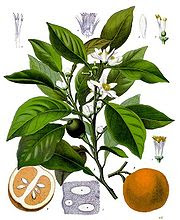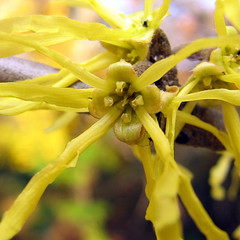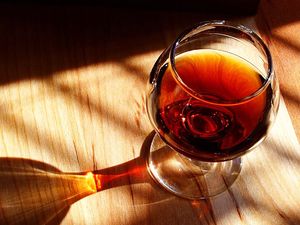 Image via Wikipedia
Image via Wikipedia
I had never heard of neroli oil before until I was given a DIY deodorant recipe given to me by a Bulgarian friend, which had this included in the ingredients. Not knowing about it before is not surprising as being a bloke who doesn’t take much interest in perfumes. Well I know about it now and so will you.
Neroli oil is produced from the blossoms and the scent is similar in scent to bergamot produced from the blossom of the bitter orange tree.
The blossoms are pick by hand in late spring and the oil is made from water distillation, as the blossom is to tender a herb to go through the process of steam distillation as with other herbs and spices.
 Princess of Nerola first introduced the essence of bitter orange tree as a popular fragrance and used it in her gloves and in the water when bathing. This is where the name comes from. Neroli has a fresh distinctive and quite spicy scent with a flowery characteristic. Its floral oils are used extensively in perfume manufacture. It is a non-toxic, non-irritant oil and over 12% of all perfumes use Neroli now as their main ingredient. It blends well with all citrus and other floral oils. A little know fact is that Neroli oil is also one of the key flavouring components of some Cola based recipes.
Princess of Nerola first introduced the essence of bitter orange tree as a popular fragrance and used it in her gloves and in the water when bathing. This is where the name comes from. Neroli has a fresh distinctive and quite spicy scent with a flowery characteristic. Its floral oils are used extensively in perfume manufacture. It is a non-toxic, non-irritant oil and over 12% of all perfumes use Neroli now as their main ingredient. It blends well with all citrus and other floral oils. A little know fact is that Neroli oil is also one of the key flavouring components of some Cola based recipes.Used in aromatherapy and massage treatment, Neroli has a soothing effect on the nervous system. For many years it has been used to relieve tension and anxiety with a marked affect to increase blood circulation. A solution can be made by adding three or four drops of the essential oil to one cup of almond oil. This can be added to grapefruit seed extract to make great oil for massage, but not for children or pregnant women.
Next time I see perfume in the shops I will look at the ingredients to see if I can detect the neroli content.
Images via Wikipedia


![Reblog this post [with Zemanta]](http://img.zemanta.com/reblog_b.png?x-id=d6735288-9100-428f-8e64-3b0f6c41d29f)

![Reblog this post [with Zemanta]](http://img.zemanta.com/reblog_b.png?x-id=fbf463d3-f1a9-492d-9d0c-3d2ca3c71f46)

![Reblog this post [with Zemanta]](http://img.zemanta.com/reblog_b.png?x-id=b82c9e12-c8d6-492c-9acb-635b3a301d90)


![Reblog this post [with Zemanta]](http://img.zemanta.com/reblog_b.png?x-id=6015e6b4-0d20-416c-bd89-37839ccfe9f2)